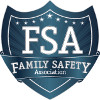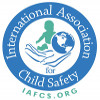Baby Proofing Safety Tips
Now that you have brought home your bundle of joy, your life is going to change in an exciting way. As a parent, you need to be more aware of what is in and around your home. If you are not prepared, your child’s curiosity could be dangerous or fatal. Baby Proofing your home and implementing these safety tips is an important step to help keep your baby and infant safe from preventable household accidents.Now that you have brought home your bundle of joy, your life is going to change in an exciting way. As a parent, you need to be more aware of what is in and around your home. If you are not prepared, your child’s curiosity could be dangerous or fatal. Baby Proofing your home and implementing these safety tips is an important step to help keep your baby and infant safe from preventable household accidents.




